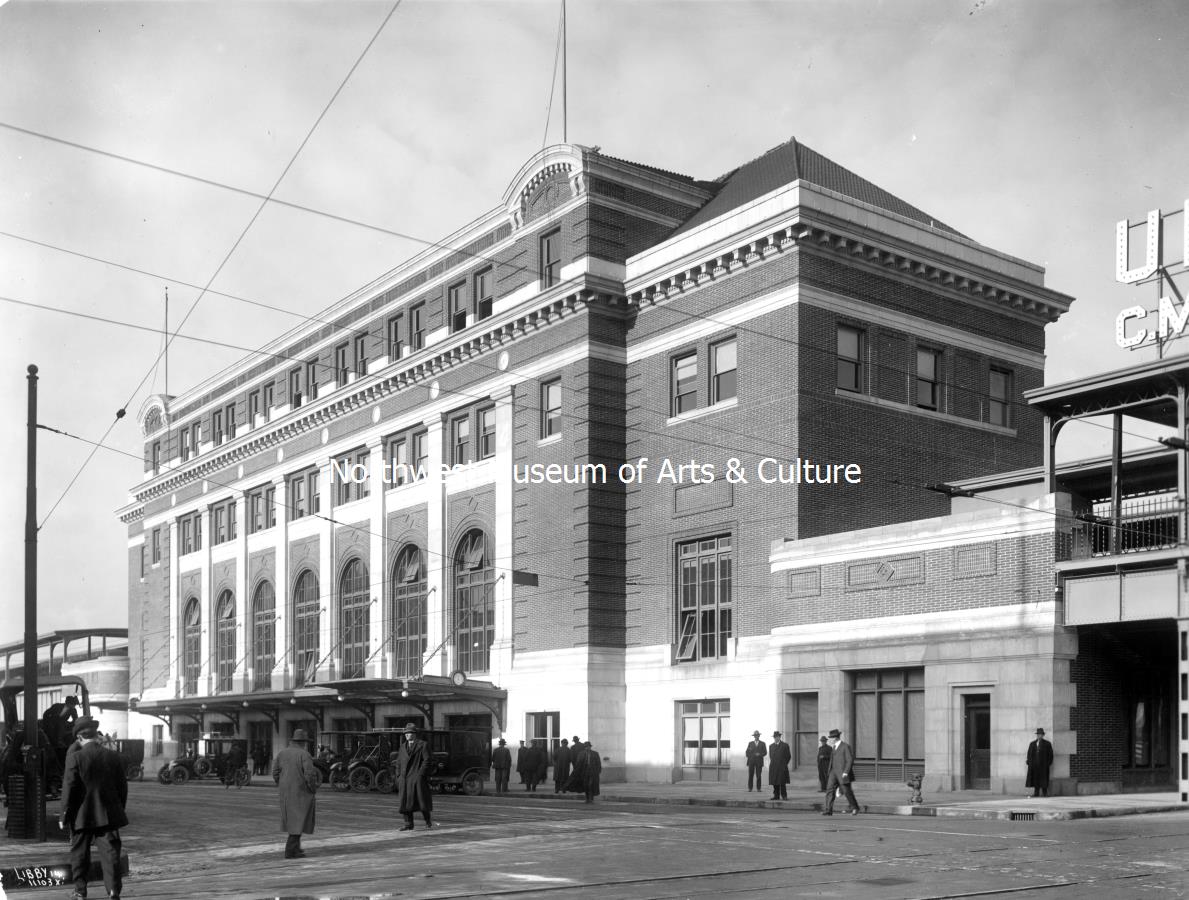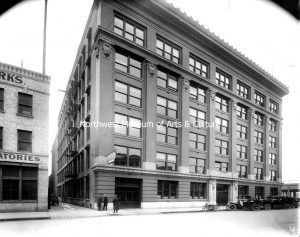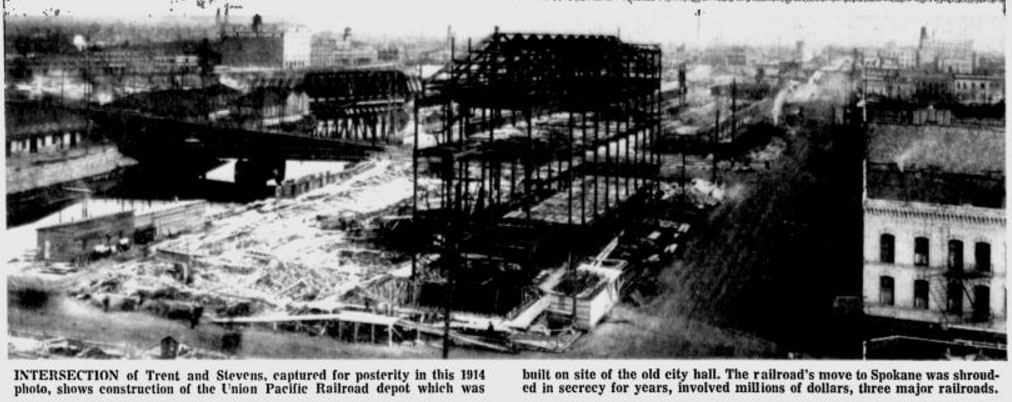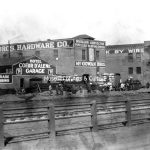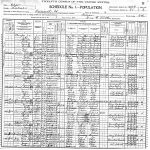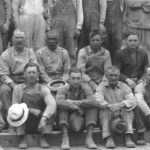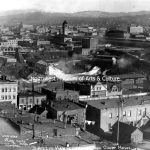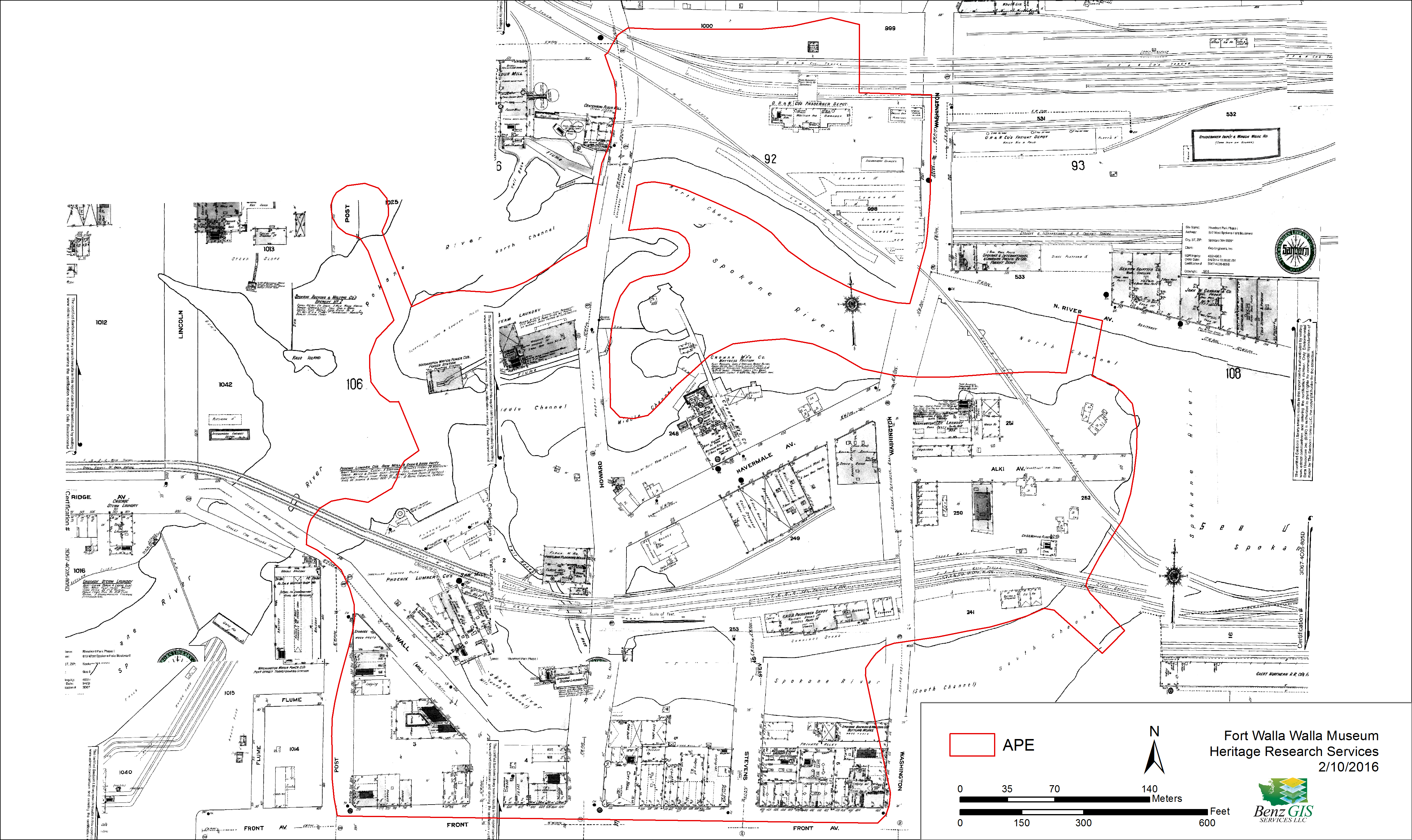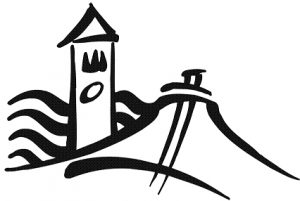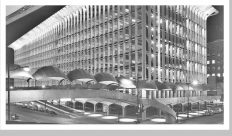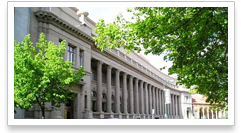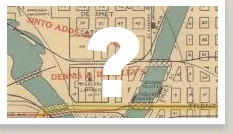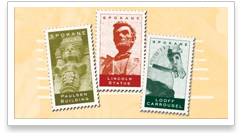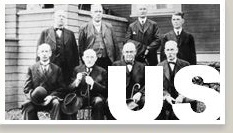The 1910s: Growth of a Modern Spokane
By 1910, the Riverfront Park area had changed radically from the scattered cabins of the 1880s. Over 1,000 residents called the area near the river home in addition to forty businesses, warehouses and factories while the population of the city topped 100,000. The south bank of the river held the majority of residents including those detained in the city jail cells. Chinatown began to diversify with the arrival of immigrants from widespread locations, becoming known as the “International District.” The international area contained restaurants, cafes, hotels, and various mercantile shops mainly owned and operated by those living in the vicinity.
The area most densely populated by businesses during this decade was the block along the river between Stevens and Washington Streets that now holds the giant red wagon sculpture and slide. The New York Brewery had been replaced by the New York Hotel, the Diamond Saloon and a four-story building with shops and offices. The Spokane Brewing and Malting Co. retained its bottling works factory near the Washington Street Bridge but expanded their operations, adding several buildings close by. The western half of the block toward Stevens Street had not yet been developed a decade before, but now much of it was occupied by saloons, shops (including a druggist), and three hotels—Hotel Toga, Nagel Hotel, and the Japanese American Hotel. Major changes occurred on the east end of Havermale Island as well during this decade. The Spokane Mattress and Upholstering Co. factory changed ownership and was now run by Carmen Mattress Co. The Central Shingle Mill no longer operated on the island, but the location was occupied by the Columbia Garage along Havermale Avenue near the north bank.
Many of the early cabins and residences on Havermale Island were removed to make way for the construction of factories and large industrial operations as technology continued to evolve. The Spokane Paper & Stationary Co. was one of the new arrivals to the island, adding to the already industry heavy landscape. The movement away from residential use of this valuable land did not eliminate the presence of local inhabitants altogether. While cabins from prior decades no longer existed, there continued to be some residential occupancy on Havermale Island. The community was still predominately made up of single or widowed Euro-American men working as common, railroad, or farm laborers as well as skilled craftsmen like stone cutters and carpenters. Most of these men resided at the two unknown hotels along Washington Street on Havermale Island.
This decade saw the arrival of several families like J.A. and Linna Praeter and their three young sons, something that had been a rarity in the past. The immigrant population also began to diversify with residents from many different countries coming to the growing city of Spokane. At this time, at least four Japanese families and with them, four single, male Japanese lodgers were residing at 506 N. Howard Street. Ten Austrian-Hungarian men and women, and two children were living on Havermale Island. Outside the common countries of origin up to this point, many people were immigrating from countries such as the United Kingdom, Germany, Scandinavia, and Italy. One single male lodger on Washington Street was Turkish while another was Eastern European, further illustrating the wide range of nationalities represented by the immigrants of the area.
The construction of the Union Passenger Depot in 1914 radically changed the area along the south bank of the river. The four blocks along Front Street where Riverfront Park is today, were leveled for the construction of the depot and the elevated tracks that accompanied it. The construction of this depot was said to be one of the most mysterious projects in the city’s history. The venture, which helped make Spokane the railroad center of the Northwest, was the dream and accomplishment of Robert E. Strahorn, referred to in history book and newspaper stories of the time as “The Sphinx” because he spent million of dollars but never revealed who his backer was. The railroad was actually built by the Union Pacific, but it was a secret until 1914 upon completion (Spokesman-Review, 2-21-1967). Buildings removed to make way included Spokane’s City Hall, jail and fire department which was demolished after less than 20 years of use and city services moved diagonally across the street to a new city hall building (we now know this building as the “Old City Hall“). The residents and businesses living in this four block area were forced to relocate to make way for the large structure and tracks. This new imposing structure, located across the river channel from the earlier but still proud Great Northern Depot, was a hub for rail travel until its demolition in the 1970s to make way for the Expo ’74 World’s Fair.

